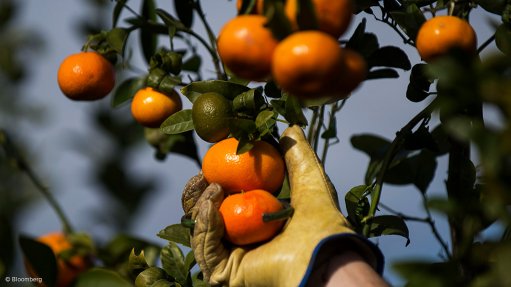New research findings can help decrease water use for more sustainable beef production
A new report funded by the Water Research Commission (WRC), and undertaken by the Tshwane University of Technology (TUT), Botswana University of Agriculture and Natural Resources and the Agricultural Research Council: Animal Production (ARC-AP), reveals that vast volumes of water can be saved during beef production through a water-wise approach.
The report, ‘Sustainable application of livestock water footprints in different production systems and regions of South Africa’, found that the cattle’s frame size significantly influences the water footprint of beef production.
The results found that Nguni cattle, the smallest of three frame sizes considered in the study, performed better than medium-sized Bonsmara and large Simmental, in terms of water consumption efficiency for post-weaning growth performance under an intensive production system (feedlots).
While a small frame-sized beef breed would be best in areas where water scarcity is common, the study suggests that the medium frame-sized breed performs better in terms of water footprint while also providing meat quality comparable to large frame-sized cattle in feedlots.
“We recommend that farmers in water-scarce areas keep the smaller frame sizes because they use less water to produce a similar yield than the larger size,” says TUT Department of Animal Sciences project leader Professor Bohani Mtileni, noting that the large frame sizes lead to water waste while not resulting in better quality meat.
“The medium-frame-sized cattle offer farmers a combination of all that is needed,” he says.
Globally, feedlot systems hold about 2% of the cattle population. In South Africa, 80% of cattle herds are for beef production, which is the second-fastest growing industry after poultry in the agricultural sector.
“However, we do not know what the related price tag in water is, or how beef production could contribute to the country’s mounting water scarcity problem. It is critical to find the relationship between water intake, economic output, post-weaning growth and meat characteristics,” Mtileni says.
“If we do not know how much water is needed to produce a kilogram of meat, we will not consider how much water is being wasted along the pipeline of producing a full-grown animal to market age.”
Benchmarking and documenting the information on how much water is needed to produce a kilogram of meat will allow for projections while considering the amount of available water in the country.
“We can compare the water being used against the products yielded.”
The study, the practical work of which was done at the facilities of the Animal Nutrition Section of the ARC-AP in Pretoria, aimed to evaluate the water footprints of cattle raised in South African feedlots, an intensive production system that grows and fattens the animals in high densities until they reach the right weight for slaughtering.
The researchers considered blue, green and grey water, including the water the animal drinks over its lifetime, the water contained in the food it eats and the water that is used when the meat is processed in the abattoir, Mtileni says.
The objectives were to investigate the water footprints of different sizes of cattle; the degree to which the volume of water varied during their growth after weaning; the relationship between the volume of water used and carcass characteristics; and, the amount of water consumed per kilogram of feed by the different breeds considered.
“The amount of irrigation water used to produce the feed was not included but is something that they would like to include in future work.”
The difference in the water footprints between a small and large breed of cattle amounted to around 500 litres per animal, a potentially enormous water saving, bearing in mind that hundreds of thousands of feedlot-kept cattle are slaughtered in South Africa each year, he continues.
Over and above insight on the influence of the animals’ frame size on those aspects considered, the study also resulted in the development of indicator traits of water footprints for intensive livestock production that can be used in livestock genetic improvement programmes locally and internationally, something that is currently lacking.
“The study is only the starting point of many questions that remain to be answered on the topic,” concludes WRC water use in agriculture executive manager Professor Sylvester Mpandeli.
Comments
Press Office
Announcements
What's On
Subscribe to improve your user experience...
Option 1 (equivalent of R125 a month):
Receive a weekly copy of Creamer Media's Engineering News & Mining Weekly magazine
(print copy for those in South Africa and e-magazine for those outside of South Africa)
Receive daily email newsletters
Access to full search results
Access archive of magazine back copies
Access to Projects in Progress
Access to ONE Research Report of your choice in PDF format
Option 2 (equivalent of R375 a month):
All benefits from Option 1
PLUS
Access to Creamer Media's Research Channel Africa for ALL Research Reports, in PDF format, on various industrial and mining sectors
including Electricity; Water; Energy Transition; Hydrogen; Roads, Rail and Ports; Coal; Gold; Platinum; Battery Metals; etc.
Already a subscriber?
Forgotten your password?
Receive weekly copy of Creamer Media's Engineering News & Mining Weekly magazine (print copy for those in South Africa and e-magazine for those outside of South Africa)
➕
Recieve daily email newsletters
➕
Access to full search results
➕
Access archive of magazine back copies
➕
Access to Projects in Progress
➕
Access to ONE Research Report of your choice in PDF format
RESEARCH CHANNEL AFRICA
R4500 (equivalent of R375 a month)
SUBSCRIBEAll benefits from Option 1
➕
Access to Creamer Media's Research Channel Africa for ALL Research Reports on various industrial and mining sectors, in PDF format, including on:
Electricity
➕
Water
➕
Energy Transition
➕
Hydrogen
➕
Roads, Rail and Ports
➕
Coal
➕
Gold
➕
Platinum
➕
Battery Metals
➕
etc.
Receive all benefits from Option 1 or Option 2 delivered to numerous people at your company
➕
Multiple User names and Passwords for simultaneous log-ins
➕
Intranet integration access to all in your organisation


















